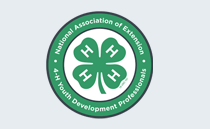Abstract
The COVID-19 pandemic illuminated how essential summer and after-school programs are for youth and their families. Policymakers took note of the needs and the evidence base, and prioritized stimulus funding to expand access and accelerate learning. American Rescue Plan (ARP) and Elementary and Secondary School Emergency Relief (ESSER) funds were quickly released to schools through different mechanisms, initially prioritizing speed over infrastructure design. The funds were intended to fuel robust school–community partnerships to provide students who suffered from pandemic-related learning and developmental setbacks with comprehensive, high-quality programming; yet the timeline for planning and implementation often hindered progress toward that vision. This article discusses the challenges to scaling critical services, the strategies that states and partners are putting into place, and opportunities to strengthen relationships and infrastructure at the national, state, and regional or local level.
Recommended Citation
Oravec, Hillary Hardt and McLaughlin, Brenda
(2022)
"The Key to Engaging Every Student: Building Greater Linkages Between National, State, and Local System Leaders,"
Journal of Youth Development: Vol. 17:
Iss.
4, Article 1.
DOI: https://doi.org/10.5195/jyd.2022.1324
Available at:
https://tigerprints.clemson.edu/jyd/vol17/iss4/1
Included in
Child Psychology Commons, Civic and Community Engagement Commons, Community-Based Learning Commons, Developmental Psychology Commons, Leadership Studies Commons



